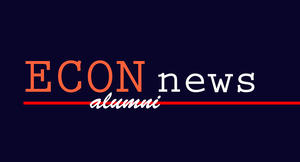STATE AFFAIRS: Beware biting hand that feeds Downstate
Three Downstate (outside metro-Chicagoland) legislators recently introduced a resolution to separate Chicago from the rest of Illinois. Based on a recent analysis of the incidence and reflection of state revenue and spending, these lawmakers should be wary of biting the hand that feeds Downstate.
Resentment of Chicago by Downstaters goes back at least to 1870. For a graduate paper written years ago, for instance, I quoted from the diary of a man from my hometown of Toulon (Stark County), who in 1870 visited the House gallery in the old state capitol. He wrote that he was regaled by a debate on the House floor over whether to cede Chicago to Wisconsin or Indiana.
Yet, according to a report issued in July by the Paul Simon Public Policy Institute at SIU, the 96 Downstate counties (outside the six counties that make up Chicagoland) receive dramatically more in spending from the state than they send to Springfield in taxes.
The big losers are the suburban counties that surround Cook (Chicago). The Simon Institute analysis shows the suburban counties receive back only 50 cents for every dollar they send to Springfield in taxes.
In sharp contrast, the 19 counties in deep Southern Illinois, where resentment of Chicago seems strongest, receive almost $3 for every dollar folks there send in.
Chicago itself is not a net beneficiary; the city receives roughly $1 back for every dollar it sends to Springfield.
Here’s another way of looking at this: The five suburban counties receive back in state spending the equivalent of only 3.5 percent of their income, whereas the 19 counties of deep Southern Illinois receive back 20 percent of their income.
We have known this for decades. In 1973, my friend Douglas Kane reported as much in his PhD dissertation in economics at the University of Illinois.
This does make sense. Governments take in money and redistribute it, generally from the richer to the poorer, needier.
And there has always been more state governmental activity Downstate than in the metro-Chicago region. For example, Downstate Illinois has thousands more miles of roads and highways than do the Chicagoland counties, so Downstate receives more motor fuel tax money than the urban counties.
Downstate also has nearly all of the state parks and 30-plus state prisons, nine of the 12 public universities, and most of the state employees. Would all mayors of prosperous Chicago suburbs who would like a prison in their towns please raise your hands!
But the primary reason Downstate benefits more than the suburbs from state spending is that Downstate is less well off than the suburbs. In 2016 suburban DuPage and Lake counties had median household incomes of $82,000 and $80,000, respectively. Downstate counties tended to have from $35,000-55,000 average household incomes, though Alexander County at the southern tip of our state registered only $29,000 in average household income.
The big-ticket spending in the state budget is for Medicaid (the federal-state healthcare program for low income persons, which serves three million Illinois residents) and school funding.
Downstate school districts generally have much less property wealth than those in the ’burbs, and property taxes pay the lion’s share of school expenses. You can buy a decent house in my rural county for $80,000; try that in DuPage or Lake counties.
Thus, Downstate receives much more in Medicaid spending and school aid than do the suburbs.
So, should Downstate be worried into the future about all this largesse the region receives from the state — at the expense of the suburbs? A former student of mine, who has long been the senior Illinois lobbyist for a major corporation, thinks so.
He points out that Republicans are becoming not only more concentrated Downstate but also much more conservative. In the spring primary election, for example, several moderate GOP members were replaced on the November ballot with staunch, small government, anti-tax conservatives.
Should a Blue Wave of Democratic victories materialize in the suburbs in November, as my former student thinks could happen, metropolitan Chicago will become even more Blue and liberal.
These Dems might say: OK, Downstaters, if you are so set against government spending, why should we in metro-Chicago keep sending so much of our money out to your voters and school districts?
The Downstate delegation in the Legislature might want to be wary of biting the hand that feeds it.
JIM NOWLAN is a former Illinois legislator, agency director and aide to three governors. He also was lead author of "Illinois Politics: A Citizen's Guide" (University of Illinois Press, 2010). Nowlan can be reached at jnowlan3@gmail.com.
